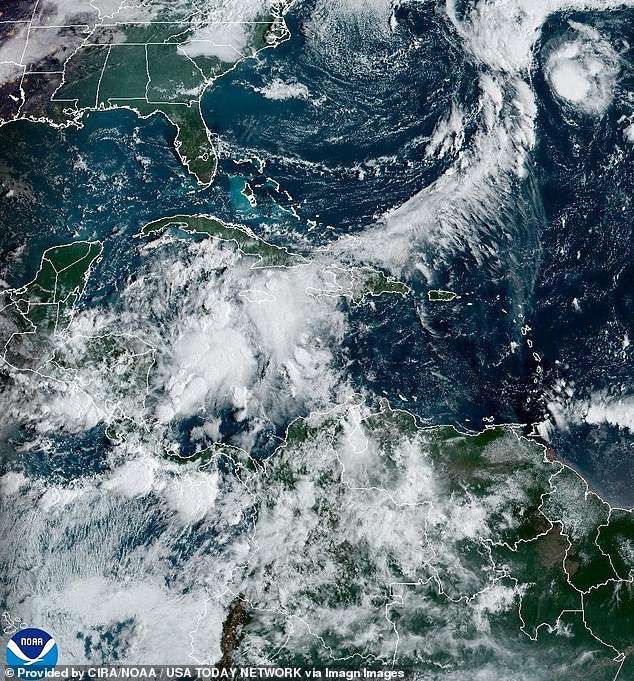Florida residents are being urged to complete their preparations for Hurricane Helene by Wednesday night as the massive storm is expected to make landfall on Thursday.
Those living in the Florida Panhandle, Big Bend region and the central and eastern Gulf Coast have been advised to stock up on food, gasoline, batteries and more.
The storm, which will strengthen into a Category 3 hurricane when it makes landfall, possibly in the Big Bend area, is expected to be the strongest of the season with possible flooding, destructive winds and a potentially deadly storm surge. According to AccuWeather.
Florida Gov. Ron DeSantis declared a state of emergency in 41 counties on Monday. On Tuesday, he expanded the executive order to 61 of the state’s 67 counties.
DeSantis told residents there is still time to prepare, as forecasters have warned that citizens have just over 24 hours to take shelter.
Florida residents are being urged to complete their preparations for Hurricane Helene by Wednesday night as the massive storm is expected to make landfall on Thursday.
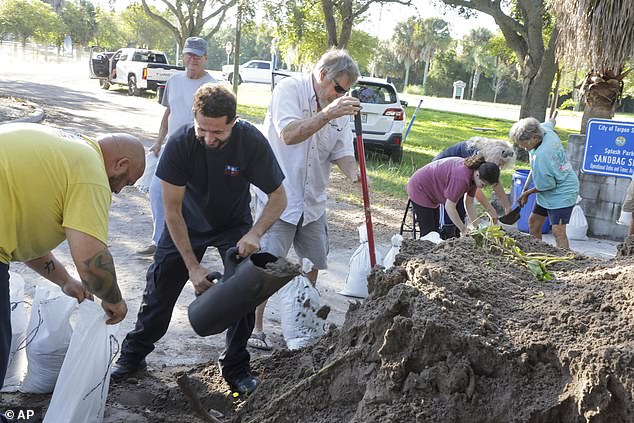
Residents in the Florida Panhandle, Big Bend region and the central and eastern Gulf Coast have been advised to stock up on food, gasoline, batteries and more. (Pictured: Residents in Tarpon Springs, Florida, are seen filling sandbags for the storm.)
“They have time to be able to implement this plan,” DeSantis said Tuesday.
Hurricane Helene, formerly known as Tropical Cyclone Nine, is expected to approach the Gulf States beginning Wednesday. The Floridian reported.
The storm, which was over the Caribbean Sea early Tuesday, had maximum sustained winds of 45 mph, USA today reported.
Wind speeds of 115 mph are expected to hit Thursday, while bringing about 10 inches of rain to parts of the Sunshine State.
Strong winds and torrential rains are expected to reach Georgia, the Carolinas and the Tennessee Valley.
“Know that this is here, know that we could have broad impacts,” DeSantis said.
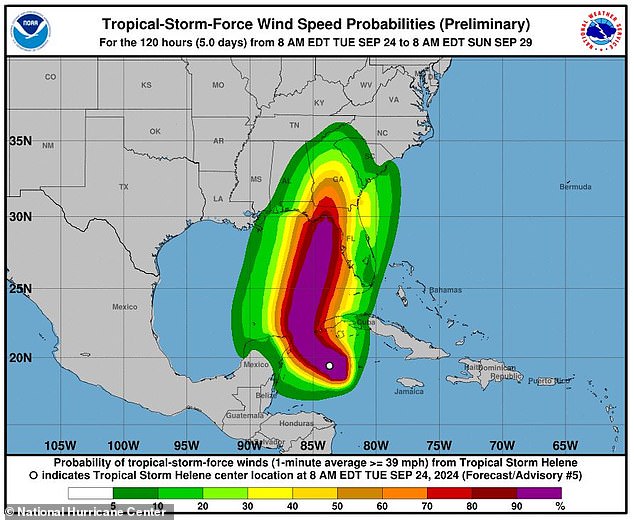
What was previously known as Tropical Cyclone Nine has been renamed Hurricane Helene.
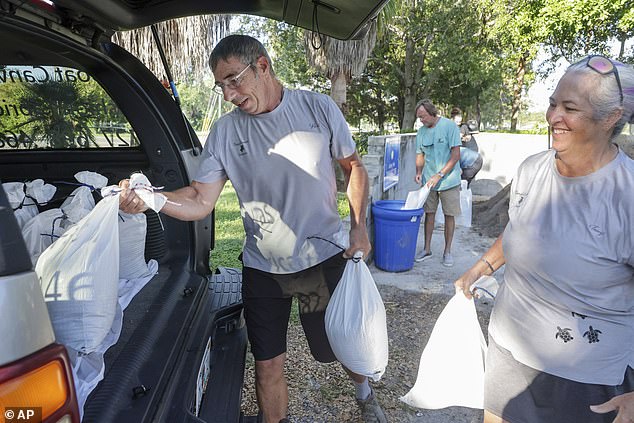
Hurricane Helene is expected to reach winds of 115 mph on Thursday, bringing about 10 inches of rain to parts of the Sunshine State. (Pictured: Florida residents loading sandbags into a car)
Residents were seen putting sand into bags and loading them into cars to prepare for possible flooding.
The governor said 18,000 linemen, 3,000 National Guardsmen, the State Guard and Starlinks (internet satellites for when the power goes out) are prepared for the storm.
“We’ve been lucky in Florida, where we have a culture where we want to get the power back on,” he said.
DeSantis also said there are 150,000 flood control devices available if needed.
“The combination of warm deep water (ocean heat content) and low, disruptive breezes (wind shear) should support rapid strengthening as Helene moves over the Gulf of Mexico Wednesday into Thursday,” AccuWeather meteorologist Bernie Rayno said.
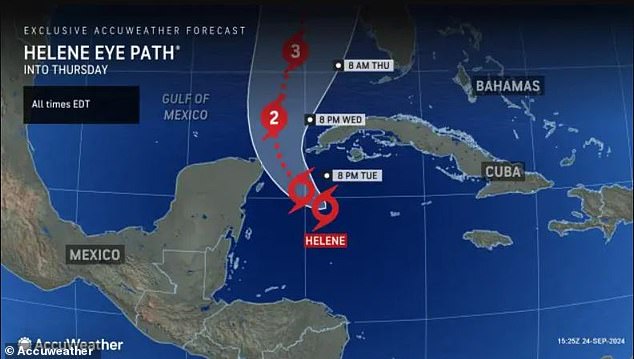
Thunderstorms and rain battered the Western Caribbean over the weekend, with landslides and flash flooding reported in areas around the Western Caribbean, Cuba, southeastern Mexico, Honduras and Belize.
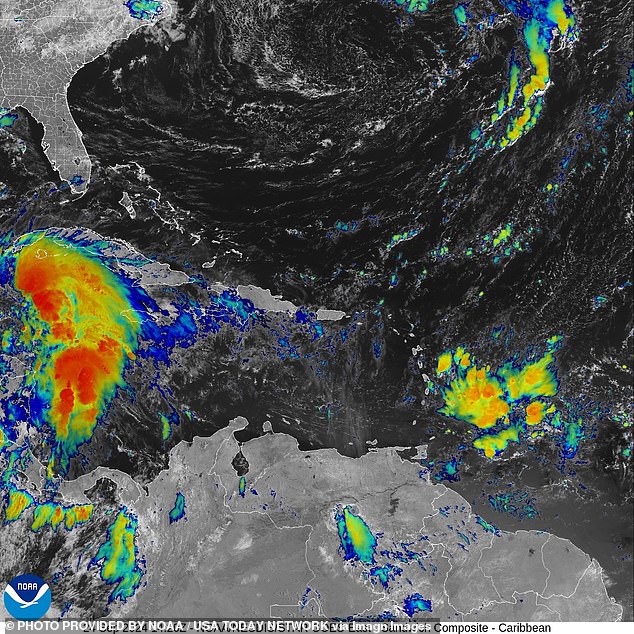
Heavy rain is also expected in Tennessee, the central Mississippi valleys, Missouri’s Ozark Mountains, Arkansas and lower Ohio later this week.
Thunderstorms and rain battered the Western Caribbean over the weekend, with landslides and flash flooding expected in areas around the Western Caribbean, Cuba, southeastern Mexico, Honduras and Belize. AccuWeather reported.
Although Hurricane Helene is currently projected to be a Category 3 storm, it could quickly become a Category 4 storm while over the Gulf of Mexico, according to AccuWeather.
Strong and damaging winds are forecast to reach the northeastern core of the storm, affecting Georgia and South Carolina.
Power outages are expected north and east of where the storm’s eye makes landfall.
Heavy rain is also expected in Tennessee, the middle Mississippi valleys, the Ozark Mountains of Missouri, Arkansas and lower Ohio later this week.
In August, Tropical Storm Debby caused severe flooding in Florida before making landfall.
The storm brought a storm surge of at least two feet to southwestern cities like Fort Myers, while photographs showed cars completely underwater.
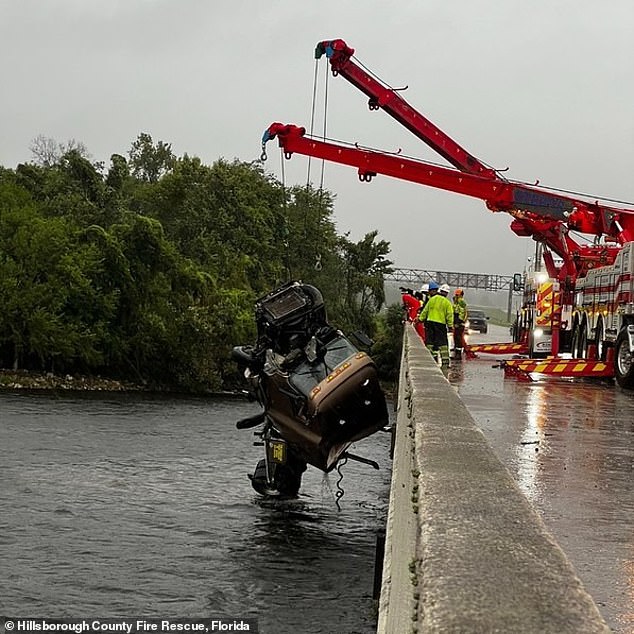
Hillsborough County Fire Rescue is seen pulling a tractor-trailer out of the water after it veered off the road following Tropical Storm Debby in August.
The massive torrents of rain caused extensive damage and killed at least five people, two of them children.
As the storm passed through Florida, more than 130,000 customers were left without power.
In Georgia, more than 28,000 people were left without electricity as winds and rain intensified.


